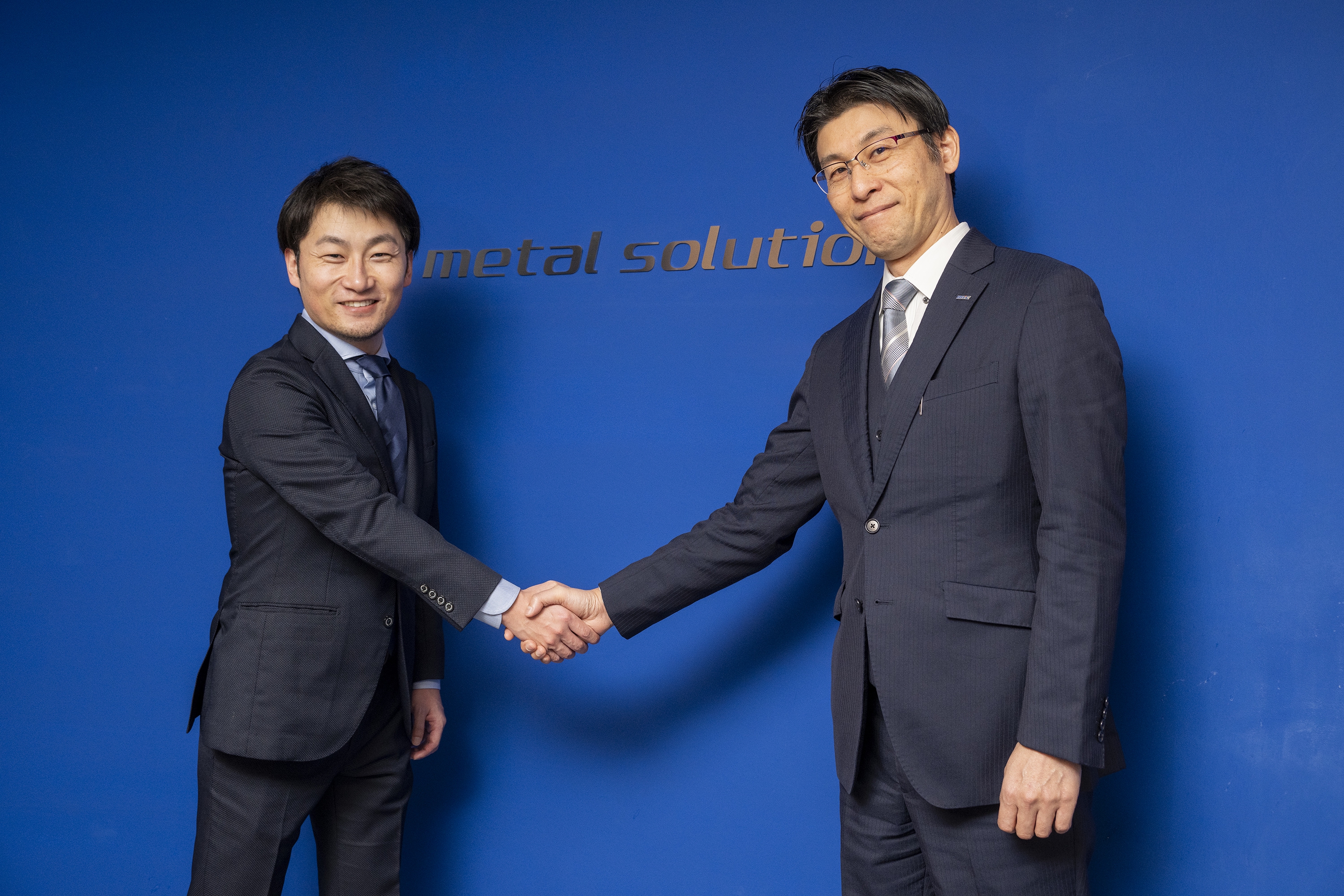
Challenges of MTC and Helical Fusion, Fusion Startups
【Discussion member】
■Tsuyoshi Uno [Metal Technology Co. Ltd.,
Board, General Manager, Technology Development Division]
■Yosuke
Kubo [Helical Fusion Co., Ltd., Director, Business Development Department]
Chairman Thank you for having us today. In February 2024, a high-temperature superconducting conductor was successfully tested by combining the technologies of Metal Technology (MTC), with the ability to bond various metals, and Helical Fusion, a start-up company developing a commercial nuclear fusion device. Mr. Tsuyoshi Uno of MTC and Mr. Yosuke Kubo of Helical Fusion will talk about the story of the development and the significance of the nuclear fusion efforts by Japanese companies.
High-temperature superconductor that “Fusion” the two company's technologies
Chairman First, let me ask what is a high-temperature superconducting coil?
Kubo We are aiming to develop a process of confining plasma by magnetic force, which is considered the most promising process for nuclear fusion power generation. There are two types of magnetic confinement methods: tokamak type and helical type, and we are pursuing the helical type, which is suitable for steady-state operation. We plan to use high-temperature superconducting conductors for the coils, which are the key to the technology. Compared to the low-temperature superconductors used in current fusion reactors, high-temperature superconductors can operate in a temperature range of about 20 degrees Celsius higher and can generate a strong magnetic field. This is attracting attention because it will lead to the miniaturization of fusion devices.
Chairman Please tell us about your innovations and know-how in manufacturing.
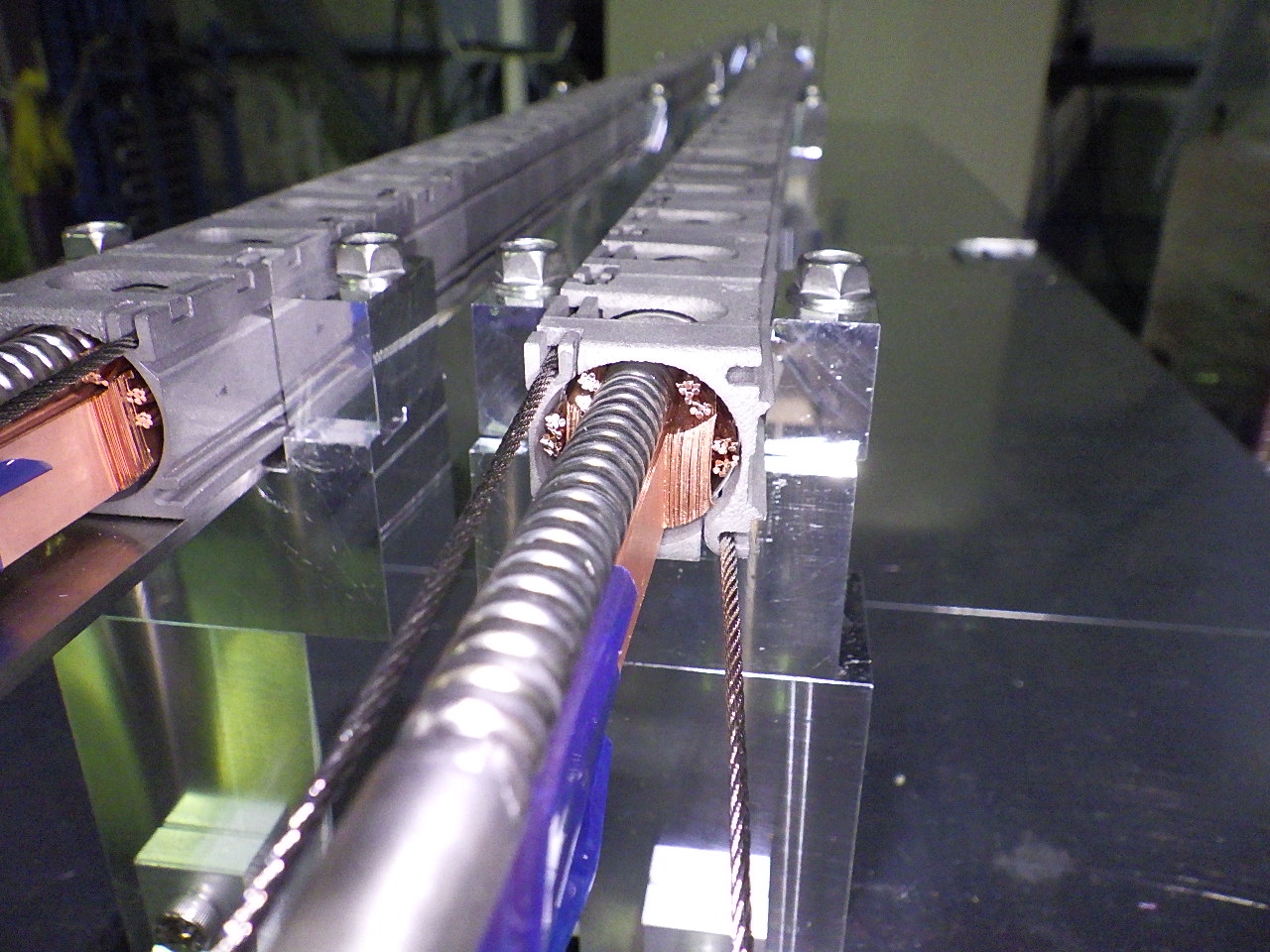
Kubo The high-temperature superconducting conductor we are working on was invented by Junichi Miyazawa, the founder of our company. Normally, ceramic conductors tend to be stiff and have a narrow range of motion, but we have developed a conductor that is easy to bend and has a large range of motion based on the original idea. In addition to being malleable, the conductor also has a high current density, which is important for generating a high magnetic field in a compact space. There are only about three companies in the world that manufacture high-temperature superconducting conductors and coils for fusion reactors, but our company is second to none in terms of performance. If we can develop this malleable high-temperature superconducting conductor coil assembly for fusion devices, we believe manufacturing will become significantly easier and this will be a major breakthrough technology for the industry.
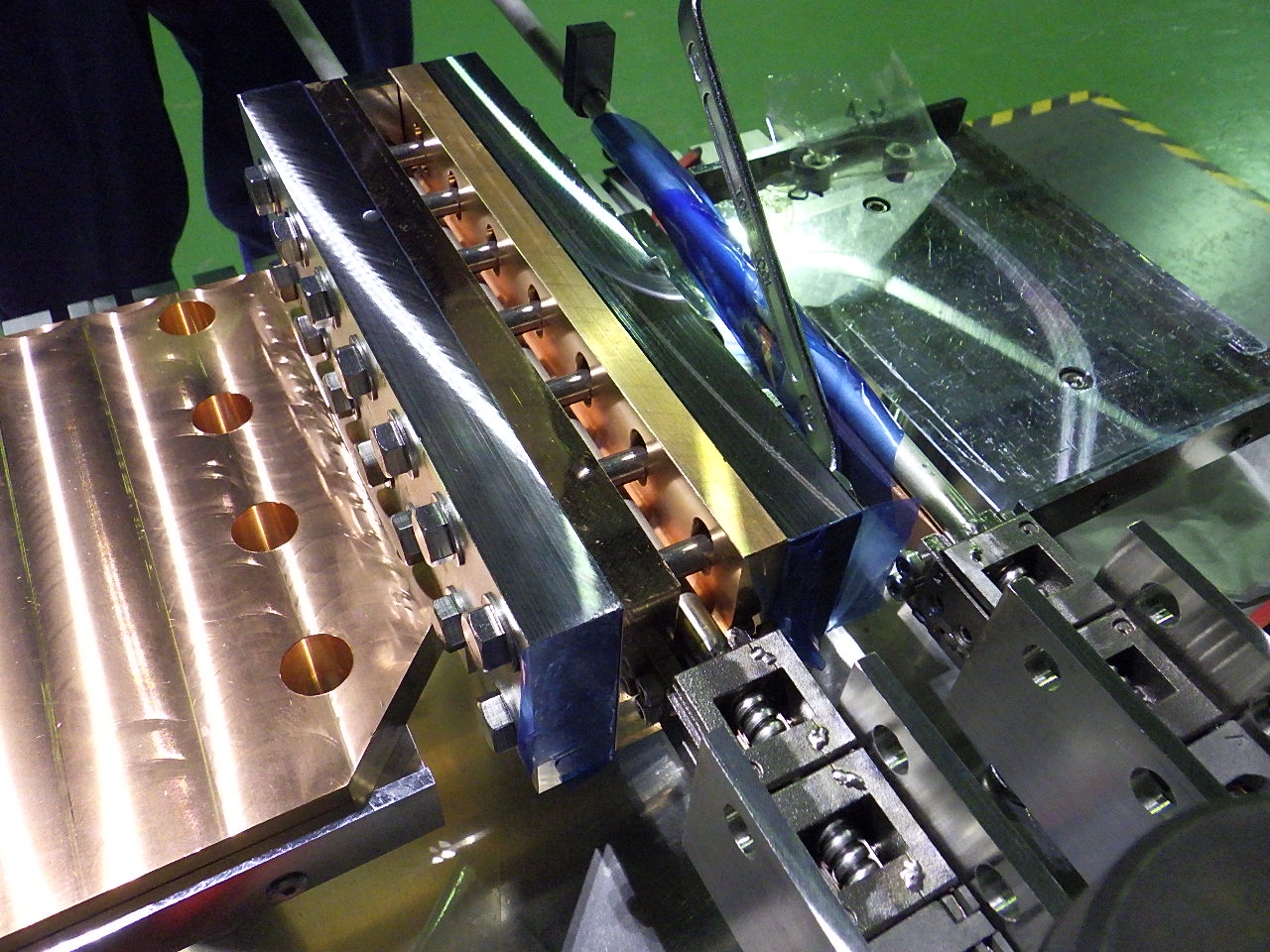
Uno The biggest challenge was to ensure freedom of shape. The material for high-temperature superconductors is ceramic, which is very brittle, and even if it is made into wire, it cannot be bent. In order to use high-temperature superconductors in fusion reactors, it is necessary to have a conductor fabrication technology that can be used for large and complex shapes. The conductor we are developing was realized by making full use of a conductor concept with a high degree of freedom of shape proposed by Helical Fusion and MTC's various metal processing and assembly technologies.
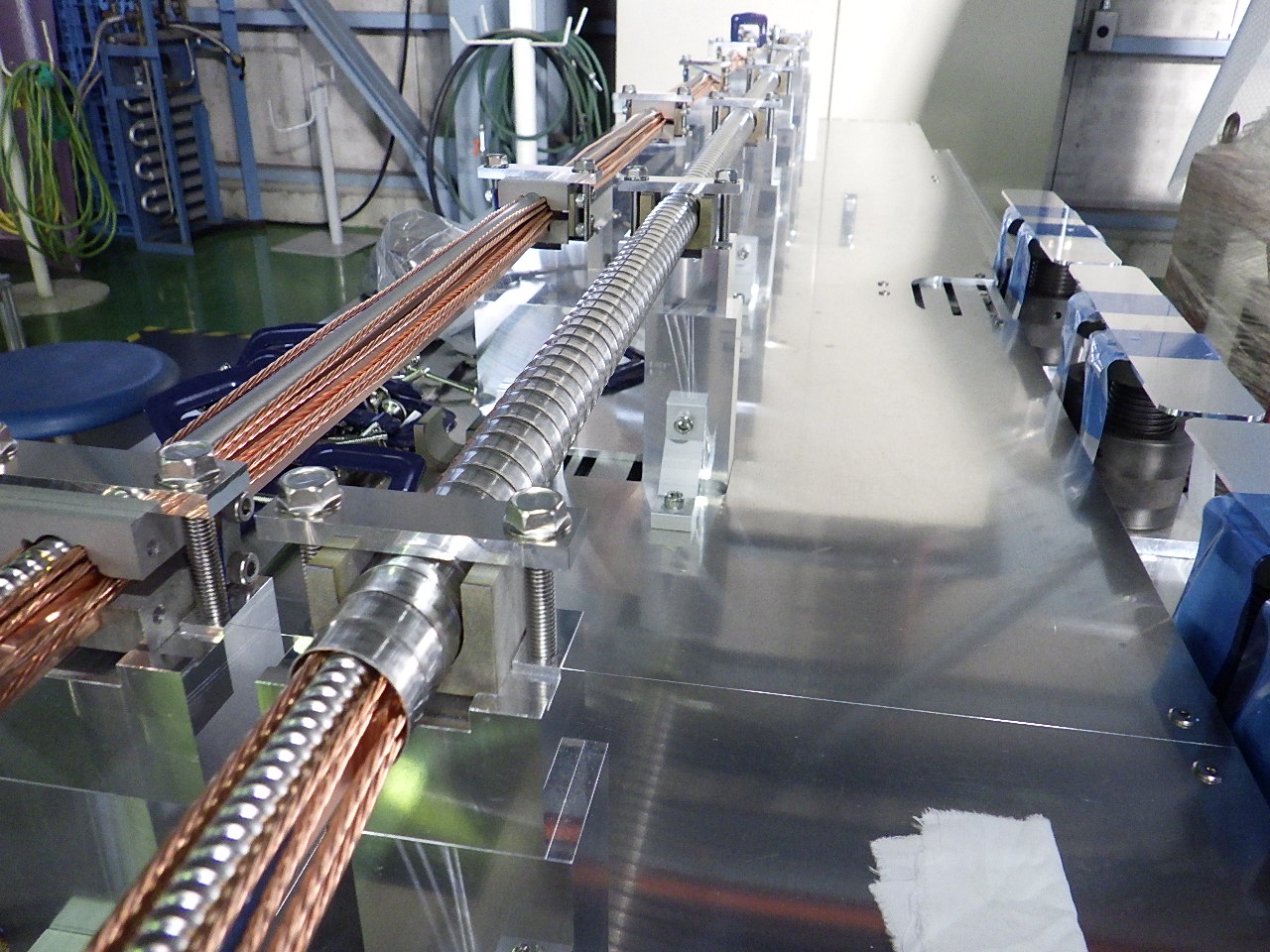
Kubo With an eye toward future mass production, the design incorporates innovative methods to ensure efficient manufacturing. In this manufacturing process, we asked the engineers to simulate the design to see if it is possible to secure mechanical strength while increasing the degree of freedom in the shape. It is a testament to MTC's engineering capabilities that we have been able to incorporate our ingenious design into the actual product.
Uno Thank you, Mr. Kubo. We had no experience in building conductors, and it was good that we were able to think from scratch. The fact that we used structural analysis and other methods to evaluate how to meet the given requirements led to the success of the development.
Utilize MTC’s experience in manufacturing fusion device
Chairman MTC has contributed to fusion projects in the past as engineering, right?
Uno MTC specializes in various metal-to-metal bonding techniques such as brazing, diffusion bonding, and welding. Our strength is the technical capability to take a basic concept proposed by the customer and incorporate it into manufacturing. We can make comprehensive proposals regarding the shape, precision, assembly method, procedure, and processing method of the requested product. We provide one-stop solutions based on our extensive knowledge cultivated through manufacturing with metals. We used this strength to respond to requests from the National Institute for Fusion Science (NIFS), from which Helical Fusion hails, for the fabrication of fusion equipment, mainly bonding. The Engineering Business Division (currently the Engineering Center, Technology Development Division), which was established in 2010, has been working on the International Thermonuclear Experimental Reactor (ITER), has designed fusion components for the International Thermonuclear Experimental Reactor (ITER) and the experimental fusion device “JT-60SA” by the Japan Quantum Science and Technology Agency (QST), and has accumulated experience in diverters, RF heating device components, and cooling tubes for superconducting coils. Based on this, we took over the fabrication of high-temperature superconducting conductors and coils for NIFS in 2020, which led to the project with Helical Fusion.
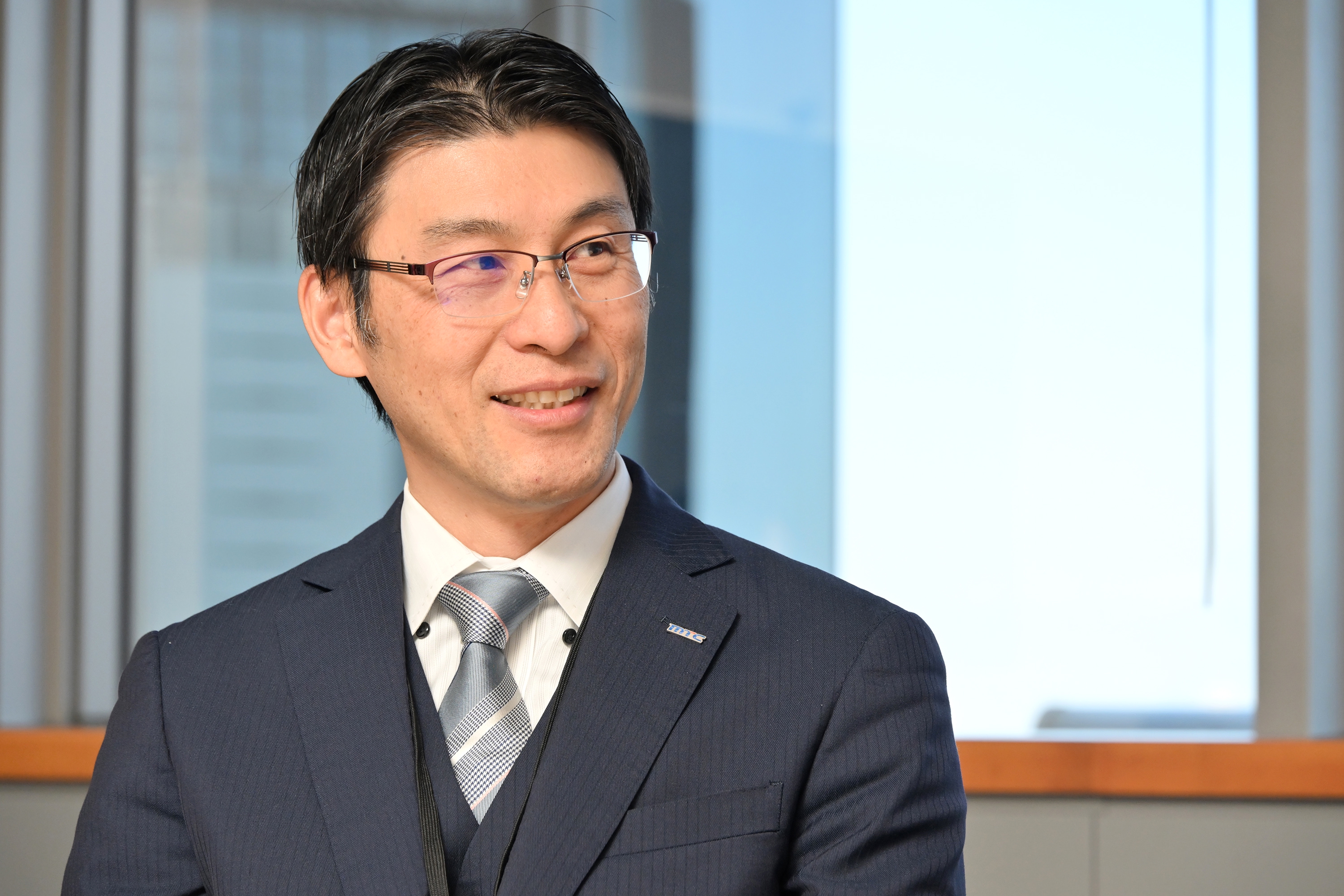 Tsuyoshi Uno
Tsuyoshi Uno
Metal Technology Co. Ltd.,
Board, General Manager, Technology Development Division
Kubo High-temperature superconducting conductors are a difficult technology to put to practical use because there are only a few examples of their manufacture in the world. MTC has a good reputation not only for its advanced technological capabilities that can handle everything from development to manufacturing, but also for its corporate culture that allows it to collaborate with startups. We are very grateful to be able to take the first step into the implementation of a technology that no one else has experience with and to develop it together with a startup like ours.
Challenge with curiosity!
Chairman Mr. Uno, you mentioned that the Technology Development Division is a department that develops technologies that lead to new business. What are the criteria for receiving a job?
Uno One is whether it looks interesting. We asked Mr. Junichi Miyazawa, co-president of Helical Fusion, directly about his vision for the production of high-temperature superconducting conductors. If a fusion reactor is realized, it will be possible to produce enormous amounts of energy without emitting CO2. The members of the department are interested in what would be great and revolutionary if realized. In order to take on the challenge of new technologies, we are trying to open as many doors as possible to obtain information.
Kubo MTC has a wonderful ability to realize ideas. The level of precision in manufacturing is also high. Compared to other conductors, it is more sophisticated and looks better. MTC also proposed many solutions to the challenges we faced during the manufacturing process. Generally, it is the party that requests the production to organize the technical issues and solutions, but MTC worked with us on that as well, which speeded up the development process.
Critical components for nuclear fusion to penetrate the market
Chairman What is the role of Japanese companies in the nuclear fusion field?
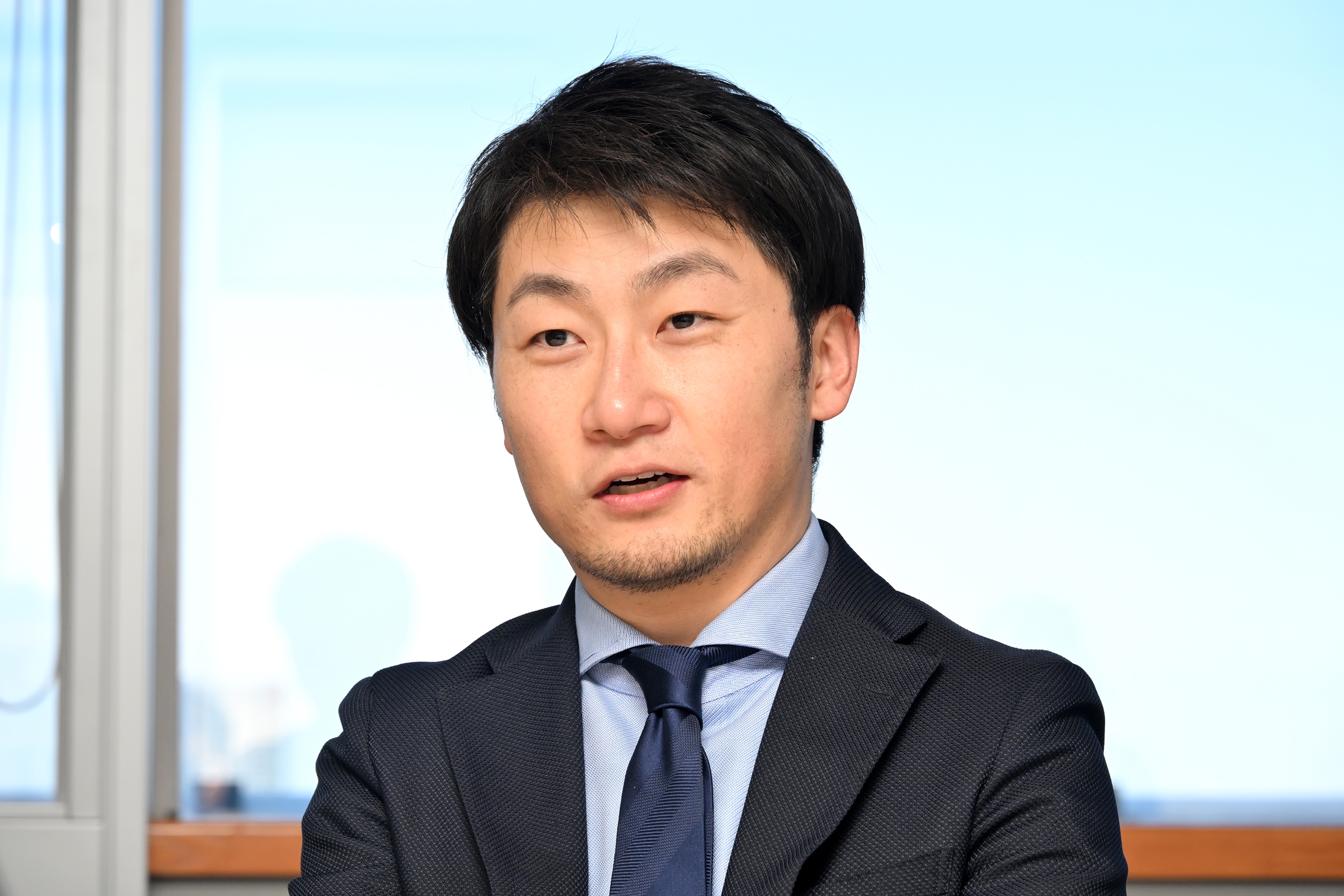 Yosuke Kubo
Yosuke Kubo
Helical Fusion Co., Ltd.,
Director, Business Development Department
Uno So far, Japan has developed high heat load resistant and neutronics components such as divertors and blankets, superconductors such as toroidal coils and solenoid coils, and plasma heating components. These technologies are used in ITER and JT-60SA, and are indispensable for the realization of fusion reactors. However, at present, they are only at the stage of experimental devices and reactors. I believe that Japan's role is to brush up these technologies to the stage where they can be used in commercial reactors in terms of performance and cost by incorporating them into the main body and feeding back experimental data. At the same time, I feel it is necessary to pay attention to new technologies and promote their development.
Kubo Japanese manufacturers such as Fujikura are leading in the field of wire materials. By promoting the development of practical machines, Japanese companies will be able to cover both materials and conductors, thereby enhancing their presence. In addition, in nuclear fusion, Japan has a world-class track record in academic research and manufacturing of experimental equipment and other products. Japan is said to be the only country in the world with the technological capability “to manufacture fusion reactors on its own. In particular, Japan excels in the manufacture of highly specialized equipment, as typified by the Metallurgical Research Institute, and in the field of materials development, as exemplified by superconducting wire manufacturers. Fusion reactors are a collection of cutting-edge technologies, and Japanese companies are expected to contribute in all areas of the supply chain. While taking advantage of the strong supply chain of Japanese companies, MTC would like to take on the challenge of integrating these technologies as a single system in the field of technology integration.
What are the challenges that Japan needs to address in order to operate commercial fusion reactors after 2040?
Chairman What is your outlook for the future?
Uno The fabrication, bonding, and assembly process of the high-temperature superconductor will be studied and mocked up for application to large and complex geometries. In addition, a stronger magnetic field will require a stronger structure to receive electromagnetic forces, and a smaller size will require conductor bonded parts that can be detached for the exchange of in-reactor equipment, so we must clear these issues one by one. We expect that high-temperature superconductor technology will spread not only to fusion reactors but also to various other fields such as medical MRI, motors, and transformers.
Kubo We are proceeding with the development of high-temperature superconducting conductors in three stages of demonstration testing to ensure that the conductors will have performance that can be used for nuclear fusion by 2027. Currently, the first stage of testing has been successfully completed. In addition, we have asked MTC to design for advanced testing for the second stage. Production is expected to be completed in early 2025, with testing scheduled for the first half of that year. After that, we plan to demonstrate fusion power generation as early as 2034, with full-scale commercial power generation to be realized after 2040.
Chairman What are your expectations of the government and industry?
Uno Compared to Europe and the United States, Japan does not necessarily have abundant funds for research and development. The lack of funds causes delays in development speed and an exodus of researchers overseas, which can be a major problem and lead to a decline in national power. However, in order to use the limited budget efficiently, I hope that the government will clarify the technologies that should be protected and invest funds in them. In addition, fusion reactors require comprehensive strength. In Japan, each company has its own technology. I would like the government to take the initiative in promoting this project.
Kubo The realization of fusion energy has the potential to be a major turning point in human history and is a theme that countries around the world are working on. For Japan, it can be an industrial field in which we have a technological advantage, and it is also important from the perspective of de-carbonization and energy security. The game has changed dramatically over the past few years, and international competition is intensifying, but we hope to create a firm advantage and realize an environment in which funds and technologies can flow to Japan. Magnetic field confinement nuclear fusion systems, including helical fusion systems, and superconductivity, which is the core technology of these systems, are fields in which we have particularly strong prospects for success. Along with MTC, we hope to take the lead in technological development, but we also expect a great deal of financial support from the government and cooperation from industry for mass production.
Chairman The combination of MTC's outstanding engineering capabilities and Helical Fusion's flexible thinking has led to the development of this high-temperature superconducting conductor. I am now very much looking forward to the realization of nuclear fusion power generation. Thank you very much for your time today.



